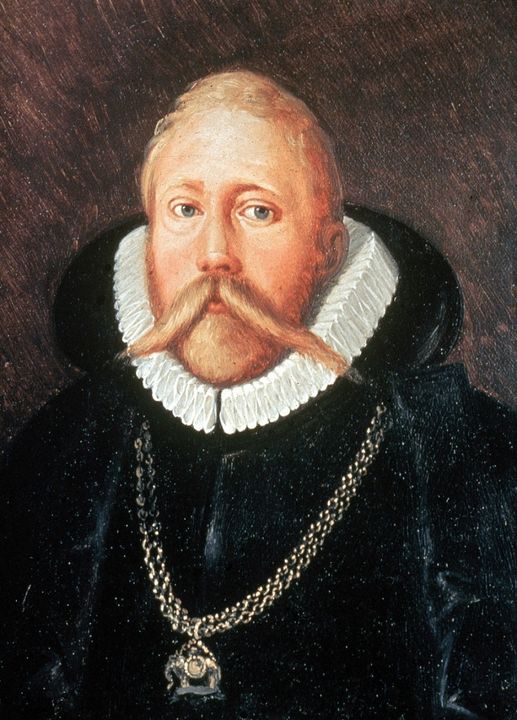Tycho Brahe, born on December 14, 1546, in Skåne, then part of Denmark (now in Sweden), was a pioneering Danish astronomer whose precise observations of the heavens laid the groundwork for modern astronomy. Despite living before the invention of the telescope, Brahe’s detailed astronomical data were instrumental in the development of Kepler’s laws of planetary motion, fundamentally transforming our understanding of the solar system.
Born into nobility, Brahe was educated in law and philosophy, but his passion for astronomy was ignited by a partial solar eclipse he observed in 1560. This event spurred his interest in the field, leading him to pursue astronomical studies at universities in Copenhagen, Leipzig, Wittenberg, Rostock, and Basel. During his time in Rostock, Brahe lost part of his nose in a duel and wore a prosthetic nose for the rest of his life, famously made of brass.
In 1572, Brahe made a significant discovery that challenged the prevailing Aristotelian cosmology. He observed a new star (now known as a supernova) in the constellation Cassiopeia, which was brighter than Venus. This “new star” contradicted the Aristotelian belief in the unchangeability of the celestial realm, as it showed that change could occur in the supposedly immutable heavens.
Recognizing Brahe’s talent, King Frederick II of Denmark granted him the island of Hven, where he built two observatories, Uraniborg and Stjerneborg, and a research institute equipped with the finest instruments of the time. These facilities allowed Brahe to compile the most accurate astronomical observations of his era. He meticulously recorded the positions of over 1,000 stars, achieving unprecedented precision in his measurements.
Brahe’s observational prowess was matched by his innovative approach to astronomical instruments. He designed and constructed large, accurate instruments such as quadrants and sextants, which enabled him to measure celestial angles with remarkable precision. His attention to detail and commitment to accuracy set new standards for astronomical observation.
One of Brahe’s notable contributions was his geocentric model of the universe, which attempted to reconcile the Copernican heliocentric model with the Ptolemaic system. In Brahe’s model, the Earth remained stationary at the center of the universe, with the Sun and Moon orbiting it, while the other planets orbited the Sun. Although this model was eventually proven incorrect, it represented a significant step toward the eventual acceptance of heliocentrism.
In 1597, following the death of his patron King Frederick II and subsequent political conflicts, Brahe left Denmark and eventually found support from Holy Roman Emperor Rudolf II in Prague. There, he served as the imperial astronomer and continued his observational work. It was in Prague that Brahe met Johannes Kepler, whom he hired as an assistant in 1600.
Brahe’s extensive observational data were pivotal for Kepler, who used them to formulate his three laws of planetary motion. These laws provided a mathematical foundation for the heliocentric model and marked a significant leap forward in our understanding of planetary orbits.
Tycho Brahe died on October 24, 1601, in Prague. His legacy lives on through his meticulous observations and the influence they had on subsequent astronomers. Brahe’s dedication to precision and empirical data collection established new standards in astronomy and underscored the importance of rigorous observation in scientific inquiry.
In summary, Tycho Brahe’s contributions to astronomy were profound and far-reaching. His accurate observations and innovative instruments significantly advanced the field, bridging the gap between ancient and modern astronomy. By laying the groundwork for Kepler’s revolutionary discoveries, Brahe played a crucial role in the scientific revolution that reshaped our understanding of the cosmos.
